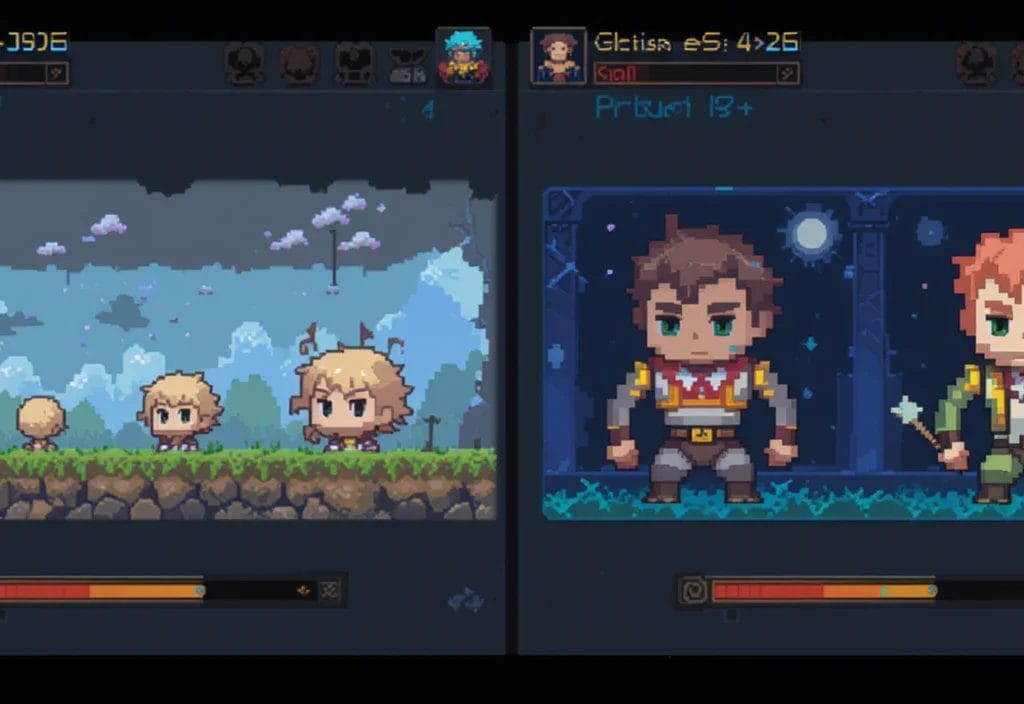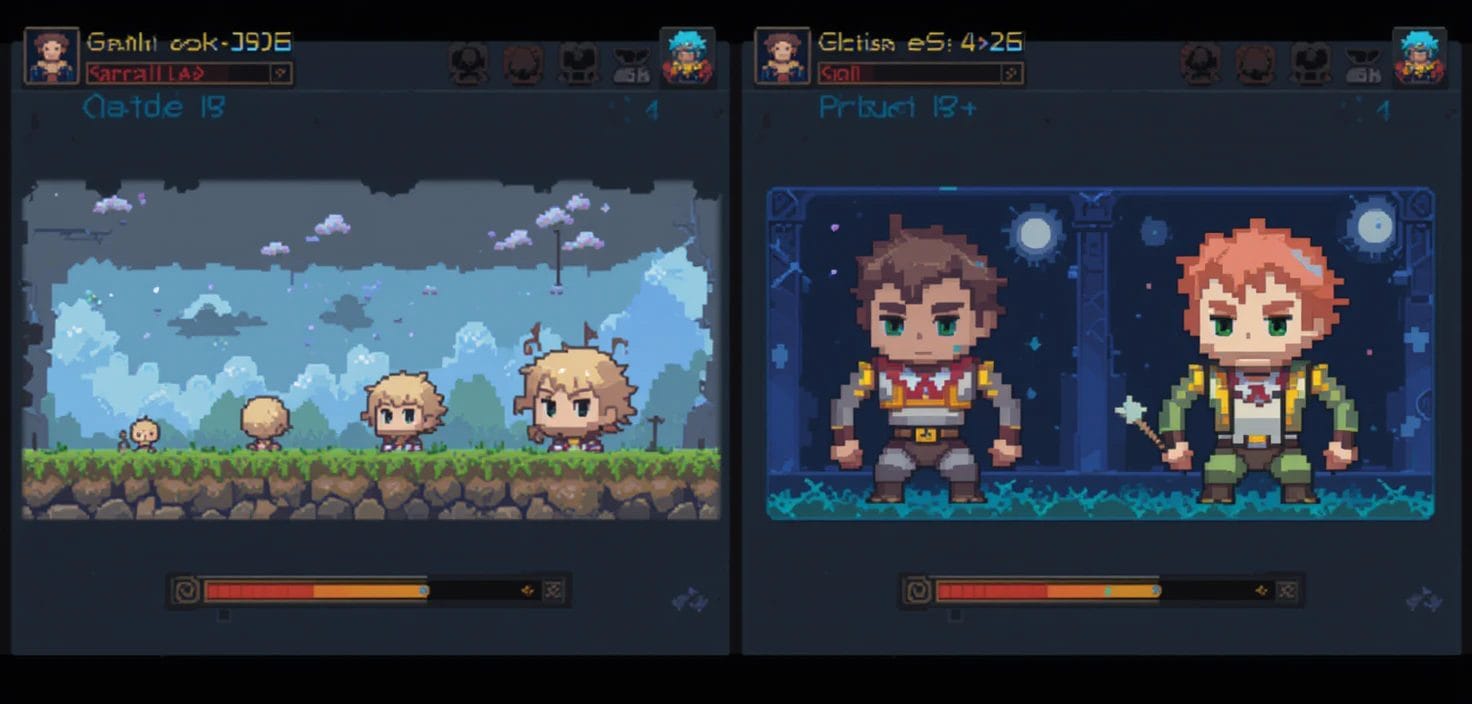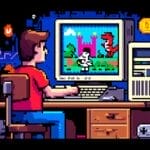Most of us, as game developers, are often so much focused on the technical aspects/side of building our creations – the coding, the art, the music – that we can, sometimes, lose the broad sight of the most important element: Player experience/fun. In the end, No matter how impressive the visuals or how intricate the mechanics, if a videogame fails to engage, retain and delight its audience/players, it will never reach its full potential and fail miserably. The secret sauce to craft truly great games lies in our willingness to embrace failure and use it as a stepping stone to cross the river a failure and reach success.

The Myth of the Perfect Idea
When it comes to game development, many aspiring creators fall into the trap of believing that the key to success lies in coming up with the perfect game idea. They spend countless hours brainstorming, refining, and polishing their concept, convinced that if they can just get it right, the rest will fall into place. But the reality is that ideas are cheap – what truly matters is the execution.
The best games become popular, not the best game ideas. Some of the most beloved and successful games in recent history have been built on relatively simple premises – “what if enemies attacked while building your Lego set?”, “what if Chuck-E-Cheese was horrifying?”, “what happens when you put 100 people in a small map with guns?” The magic lies not in the initial idea, but in the way it’s brought to life and refined through an iterative process of experimentation and feedback.

Fail Faster, Succeed Sooner
The core message of this video is that the path to creating great games is paved with failure. Rather than clinging to our initial ideas and trying to perfect them, we need to embrace a mindset of “fail faster, succeed sooner.” This means rapidly prototyping our concepts, getting them in front of players, and being willing to make changes based on the feedback we receive.
The best way to start is by creating the smallest possible version of your game – the Minimum Viable Product (MVP). This allows you to test your core mechanics and get a sense of how players will interact with your creation. From there, you can gather feedback, identify areas for improvement, and iterate on your design.
The key is to approach game development like a scientist conducting experiments. Don’t be defensive about the flaws in your game – instead, embrace them as opportunities to learn and grow. Remember, the game isn’t a reflection of you as a designer; it’s simply a work in progress that needs to be refined and polished.
Gathering Feedback: The Lifeblood of Great Games
One of the most important steps in this iterative process is gathering feedback from players and other game developers. Only through getting player feedback and being willing to change your game’s design will you be able to create the most engaging game possible.
There are a variety of ways to gather this feedback. You can use the feedback settings built into the GDevelop engine to collect player input directly within the game. You can also reach out to people in your network, both online and offline, and ask for their honest, unfiltered opinions. Additionally, you can publish your game with a feedback form, allowing players to share their thoughts and experiences.
The key is to approach this feedback with an open mind and a willingness to make changes. Try reacting with as little emotion as possible and just say ‘I’ll write that down’ or ‘I’ll take note of that’ so then they’re not afraid to be honest with you. This will help you gather the insights you need to truly refine and improve your game.

Iterating on Your Prototype
Once you’ve gathered feedback and identified areas for improvement, it’s time to start iterating on your prototype. It can be tempting to think that adding more mechanics, better art, or improved sound effects will make the game feel better. But often, these elements are just “noise” that can distract from the core issues with the game’s design.
Instead, the focus should be on refining the core gameplay loop and addressing the common themes and insights that emerge from the feedback you’ve gathered. This might involve tweaking the controls, adjusting the pacing, or rethinking the overall structure of the game.
It’s important to try to figure out why your game might have a high bounce rate or why players aren’t playing the game for as long as you hoped. By analyzing player behavior and engagement metrics, you can identify the pain points that are preventing your game from reaching its full potential.
Throughout this process, it’s important to continue seeking out feedback and testing your prototypes with as many people as possible. The more perspectives you can gather, the better equipped you’ll be to make informed decisions about the direction of your game.
Promoting Your Game: Leveraging the Power of Community
As your game starts to take shape, it’s important to begin promoting it and building a community around your creation.
- Posting your various development builds on platforms like itch.io to gauge interest and gather feedback.
- Sharing video clips and screenshots of your game’s progress on social media to generate buzz and excitement.
- Advertising your game as it gets closer to completion, using tools like the GDevelop ad platform to reach a wider audience.
By actively engaging with the game development community, you can not only gather valuable feedback, but also start to build a loyal following of players who are invested in the success of your project.
There are a wealth of resources available to help you on your game development journey, including links to the GDevelop Asset Store, the GDevelop Merch Store, the GDevelop Documentation, and a variety of game examples. Additionally, there are tutorial playlists covering everything from beginner to advanced topics, as well as a playlist dedicated to creating your first game.

Embracing the Journey: The Path to Greatness
Creating great games is not an easy task, but by embracing the “fail faster, succeed sooner” mindset, you can increase your chances of developing truly engaging and memorable experiences. Remember, the journey is just as important as the destination, and every failure is an opportunity to learn and grow.
So, start building. Don’t worry about perfecting your idea – just get something in front of players and start gathering feedback. Be willing to make changes, iterate on your design, and continue seeking out new perspectives. With persistence, creativity, and a willingness to learn from your mistakes, you can create the kind of games that will captivate and delight players for years to come.
Good luck on your game development journey, and remember to have fun along the way!
A game developer that wants to share its knowledge and experience with other game developers-





